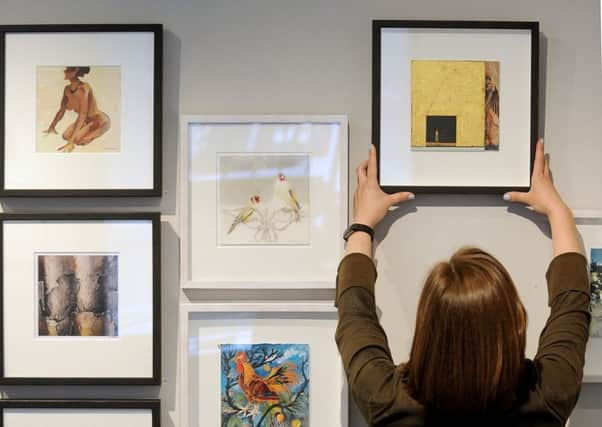Christina Jansen: Scottish Gallery founder gave a leg up to art


For this master framer and gilder, necessity was the mother of invention. If artists needed somewhere to hang the work he was framing, surely there could be a space found next to his workshop?
In the age of the Enlightenment, artists trained by the Trustees Academy joined writers, philosophers, publishers and entrepreneurs and chose to stay in Edinburgh rather than move to London.
Advertisement
Hide AdAdvertisement
Hide AdAitken Dott was one of these entrepreneurs and the wisdom of his decision was reflected in the popularity of those early exhibitions. For many it was the first chance to see the work of the stars of Scotland’s contemporary art world.
From Horatio McCulloch’s epic landscapes to William McTaggart’s powerful scenes, Scotland’s art was in demand. This continued with the gallery’s close relationship with The Scottish Colourists.
Cadell, Hunter and Fergusson followed when Samuel John Peploe hired part of the gallery for his first solo show. His confidence was well founded and all of The Colourists enjoyed a rewarding relationship with The Scottish Gallery.
Of course, their work was not just of the Scottish landscape. As modern art in Scotland developed, so too did the gallery, as it moved to a bigger premises on South Castle Street in 1860. It was here that SJ Peploe and The Colourists held their first shows in the early 1900s. Artists from The Edinburgh School were supported by the gallery as another golden age of Scottish painting dawned. It was not oil on canvas, however – as artists developed their practice The Scottish Gallery continued to support them.
When Jessie M King decorated pots or Anne Redpath painted furniture or Alan Davie designed jewellery, the gallery exhibited the work. This was not out of the blue; the gallery had always shown objects, including a Cartier diamond jewellery exhibition in 1914.
As ever the development of the gallery has been led by the artists. After 120 years in South Castle Street, The Scottish Gallery moved first to George Street in 1981 and then to Dundas Street in 1992, where its current home continues to champion art across two floors of gallery space.
This allows us to present the best Scottish art next to work by acclaimed international artists with space to nurture and discover new talent.
Advertisement
Hide AdAdvertisement
Hide AdFor Scottish art to flourish, it needs the same ingredients that inspired Aitken Dott, a spirit of entrepreneurialism, a confidence that allows artists to showcase their work in an international context and the backing of schools and galleries to support the business of art, allowing artists to get on with making it.
Christina Jansen is managing director of The Scottish Gallery, which celebrates its 175th anniversary this month.